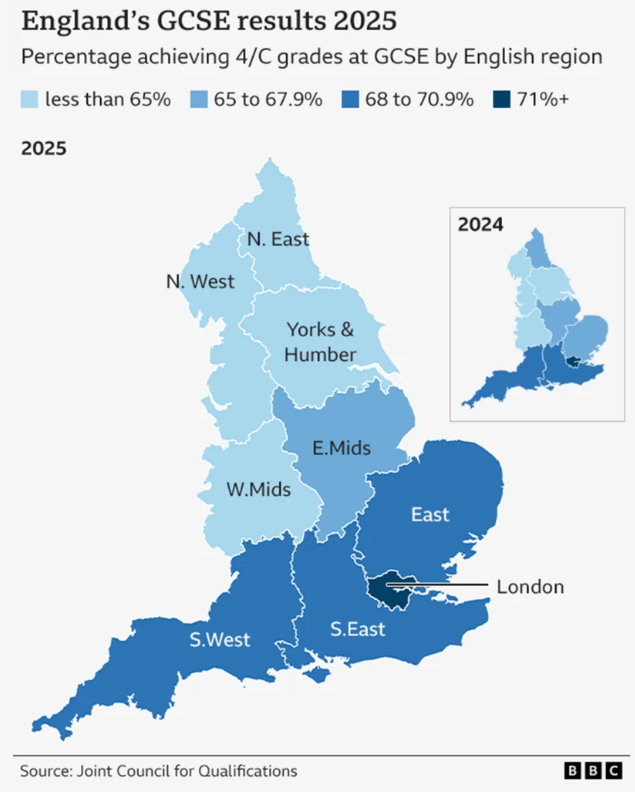GCSE Results Day 2025: National Trends & Key Takeaways
GCSE Results are finally here! After working hard this summer, many students faced their first round of formal exams looking to achieve the grades needed to study their chosen A-Levels or college courses.
The class of 2025 faced significant disruption to their education as the COVID-19 pandemic interrupted their key transition period from primary to secondary school, resulting in a substantial amount of time spent learning online rather than in person.
As a leading voice in the education sector, we’ve prepared a concise report to provide you with an overview of this year’s GCSE results. This will give you some early insights into national trends and key takeaways for the future.

📊 Topline Statistics
- Overall pass rate (9-4/A*-C): 67.1%
- This year the proportion of GCSEs marked at 4 (C) or above is:
- 67.1% in England, down from 67.4% in 2024
- 62.5% in Wales, up from 62.2%
- 83.5% in Northern Ireland, up from 82.7%
- While pass rates in England have fallen, the pass rate in Wales and Northern Ireland has increased
- This is the second year that grading has returned to pre-pandemic levels across all three nations
- Top grades (7-9/A-A*) rise by 6% since 2019
- London had the highest pass rate (71.6%) and the West Midlands had the lowest (62.9%)

📈National Trends & Insights
- 21.9% of UK GCSE entries were awarded the top grades – at least a 7 (A) or above
- The GCSE gender performance gap is closing, with 2025 results showing the narrowest disparity since 2000
- Nearly a quarter of girls’ GCSE exam entries achieved at least a grade 7 (A) compared to around a fifth of boys’ entries
- English and Maths pass rates fall again
- This year, only 59.7% of students achieved a grade 4 (C) in English, falling from 61.6% in 2024
- 58.2% of students received a grade 4 (C) in Maths, dropping slightly from 59.6% in 2024
- Performing Arts saw a significant rise in the number of students taking the subject, with an 8% increase compared to 2024. Music closely followed this.
- Engineering saw a 19% decrease in entries, with Chemistry, Biology and Physics all facing 6% drops
- It appears pupils are beginning to favour creative subjects over traditional STEM subjects
➡️Looking Ahead
What’s next for students?
- Many students will be looking to return to their school to join their sixth form and commence their A-Level studies whilst some will start applying for apprenticeships to learn a new trade or skill and start full-time work
- Pupils and parents have been warned there could be more competition than ever for sixth form places this summer due to a rising 16-year-old population
Sources: GCSE results 2025: Pass rate falls again as thousands of students find out grades in England, Northern Ireland and Wales – live updates – BBC News / GCSE results day 2025 LIVE: Breakdown of grades revealed as new app launched – Mirror Online / GCSE results 2025: 8 key trends in England’s data / GCSE results 2025: Top grades rise again as gap between girls and boys at narrowest this century | ITV News / GCSE results 2025: Small drop in English and maths pass rates | Tes
Prospero Teaching recruits teachers you can trust
Teaching Blog
Read our latest blog covering news and ideas from the world of education.
No results found.....